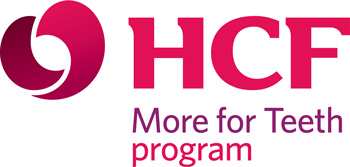In case of a dental emergency that requires same day bookings, please call 08 9276 1540

CLEANING AROUND IMPLANTS
Cleaning around implants – good oral hygiene must take place before, during, and after placement of dental implants to ensure the health of the implant. Patients are concerned about what kind of maintenance their implants will require. Do they brush and floss their implants like regular teeth? Does food get underneath the fixed implant bridge or prosthesis? Patients look to their hygienists to address these concerns and help them with an individualized home-care routine.
The tissue surrounding the implant should appear pink, firm with no signs of infection.
Interproximal brushes
What toothbrushes and interdental products are best to use with implants?
Several studies have been conducted regarding what type of toothbrush is most effective for implants. The results show no significant difference between sonic, electric, or manual toothbrushes. The main focus needs to be on adaptation to the prosthesis and the patient’s dexterity. A soft toothbrush should be used; options include a manual brush or electric.
Floss
There are many types of floss on the market, and generally it is highly recommended to use unwaxed tape or implant-specific floss in order to protect the tissue surrounding the implant. Alternatively for a bar-retained prostheses, full fixed retained prostheses, or wider interproximal spaces, a floss threader or a specialized floss that has a built-in threader is necessary.

Insert floss on mesial and distal
To floss the implant, use dental tape and insert the floss in contacts on both sides of the implant. Wrap in a circle and crisscross in front, switch hands, and move in a shoe-shine motion into the peri-implant crevice, which is highly susceptible to inflammation/peri-implant disease due to biofilm.
In addition, antimicrobial mouth rinses may be recommended, especially if inflammation is present or if the patient has dexterity problems, and difficult-to-reach areas. If the patient is prone to inflammation, the use of an antimicrobial rinse, in conjunction with a rubber tip stimulator, may be recommended to inactivate bacteria substantive.
Post-surgical implant placement home-care guidelines
- Drink only clear liquids; a soft diet is recommended for the first few days.
- Take all prescribed antibiotics to prevent infection.
- Take prescribed pain medication as needed for pain.
- Use an extra-soft toothbrush twice daily to clean pre-existing teeth or other implants, being careful to avoid the surgical incision area. If patient uses an ultrasonic or electric toothbrush, wait one to two weeks.
- Clean between teeth once a day throughout the entire mouth except at the surgical site.
- Avoid wearing the temporary prosthesis provided or denture to let the gum tissue heal (if the implant was not immediately loaded).
- If recommended, use saltwater rinses or non-alcohol antimicrobial mouth rinse two times daily.
Implant Home-Care Guidelines
- Brush twice daily with low-abrasive dentifrice.
- Floss with dental tape (mesial/distal and facial/lingual) in shoe shine motion or use a water flosser one to times daily.
- If recommended, use interdental brush, rubber tip, soft picks, and/or water irrigation unit one to two times daily.
- If inflammation present use non- alcohol anti-microbial rinse and/or add to water irrigation unit in 1:10 dilution.
Removable Prosthesis Guidelines
- Remove the prosthesis (overdenture) daily to soak in specific cleaner for recommended time only.
- Do a visual check of O-rings, locator caps, and clips. Alert dental professional if worn or missing, to be replaced.
- Remove the prosthesis from the cleaner and brush the underside with denture brush, being careful not to damage the attachments.
- Rinse off the prosthesis thoroughly with water and/or non-alcohol antimicrobial rinse.
- Rinse mouth with antimicrobial for 30 to 60 seconds and reinsert the overdenture into place.
Smart Choice
REQUEST A CONSULTATION








